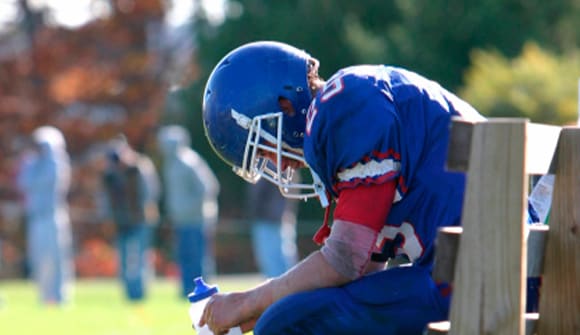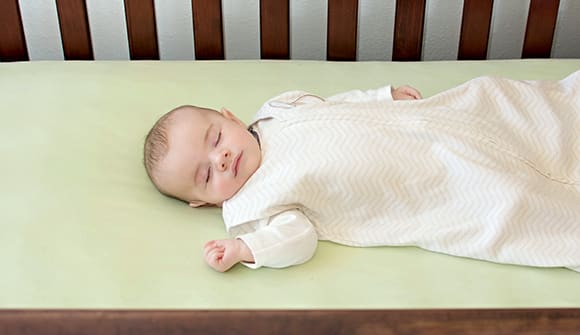Cold-water relief
Preventing heat-related sports deaths during COVID-19.
Article Author: Johnny Woodhouse
Article Date:

Having experienced months of inactivity due to COVID-19 restrictions, many student-athletes may be in a deconditioned state heading into the fall sports season.
That’s why school districts are taking a phased approach when it comes to preseason activities, especially this time of year when heat issues and temperatures are at their highest.
“August is one of the biggest months for exercise-induced heat illness and heat stroke, which is a medical emergency,” said Jim Mackie, MEd, a licensed and certified athletic trainer and program development coordinator of the Jacksonville Sports Medicine Program. “Holding athletic practices in extreme heat requires constant monitoring and supervision.”
In 2009, the National Athletic Trainers Association issued specific pre-season guidelines for adjusting to the heat, as part of its ongoing efforts to reduce the number of heat-related athletic injuries in secondary schools.
According to a 2019 survey, 18 cases of exertional heatstroke were reported at 10 Florida high schools during the 2017-2018 school year. Another 95 schools reported 461 cases of exertional heat illness that required treatment.
The Centers for Disease Control and Prevention defines heatstroke as a body temperature of 103 degrees or higher. Other heat-related illnesses include heat exhaustion and heat cramps.
Zachary Martin Act
Florida leads the nation in the number of heat-related deaths among student-athletes with four in the past nine years.
One of those fatalities was Zachary Martin, an aspiring high school football player from Fort Myers who collapsed during a preseason practice in June 2017. Martin died 11 days later, never regaining consciousness. He was only 16 years old.
According to medical research, there is a 100% survival rate if a person with heat stroke is immersed in ice-cold water within 10 minutes. Martin’s high school had a cooling tub in its locker room but it was not properly prepared nor on the practice field at the time of his heatstroke.
In January 2018, the Florida High School Athletic Association’s 15-person Sports Medicine Advisory Committee, which includes Robert “Bob” Sefcik, executive director of the Jacksonville Sports Medicine Program, recommended to the FHSAA board that all member schools have cold water immersion tubs.
But it took a bill created in the Florida Legislature, led by State Sen. Keith Perry of Gainesville, Laurie Giordano (Martin’s mother) and Sefcik, to make cooling tubs mandatory, state-wide.
Florida Gov. Ron DeSantis recently signed the bill, known as the Zachary Martin Act, into law.
The act also requires FHSAA schools to train personnel year-round on heat-related illness symptoms and take actions to immediately treat athletes showing heat-stress symptoms, including cooling the body first before transporting the athlete to a nearby hospital.
Special thermometer
As part of the legislation, high schools are also required to record outside temperatures with a WetBulb Globe Temperature (WBGT) thermometer, which gives readings using several variables.
According to the National Weather Service, WBGT is a measure of heat stress in direct sunlight, which takes into account temperature; humidity; wind speed; sun angle; and cloud cover (solar radiation).
“That differs from the heat index,” said Mackie, an athletic trainer for more than 40 years and past president of the Southeast Athletic Trainers Association.
“Outside temperatures have to be checked a half hour before each practice, re-checked periodically and schools must establish ‘cool zones’ within the practice area.”
Some modification of equipment worn, length of practice and rest breaks are based on the WBGT readings.
30-minute threshold
Once heat stroke is identified and the body has succumbed to the heat, getting an athlete in an ice tub is really the only way to guarantee survival, said Sefcik.
“If we can get an athlete in a tub within 10 minutes, there’s a 30-minute threshold during which the body can withstand that temperature,” he said. “After that, it becomes devastating and irreversible to the internal organs. On-site cooling is the best practice.”
In August 2019, while providing care at a preseason football jamboree in Jacksonville, Sefcik, Mackie and other athletic trainers came to the aid of a cheerleader who passed out due to heatstroke.
The athletic trainers quickly placed the student-athlete in a cooling tub, which eventually brought her body back to a safe temperature.
“Then we put her in a car with her mother and sent her home,” Sefcik said.
To learn more about youth sports injury awareness, advocacy and prevention in Florida, visit jsmp.us or contact the Jacksonville Sports Medicine Program at 904.202.4332.



